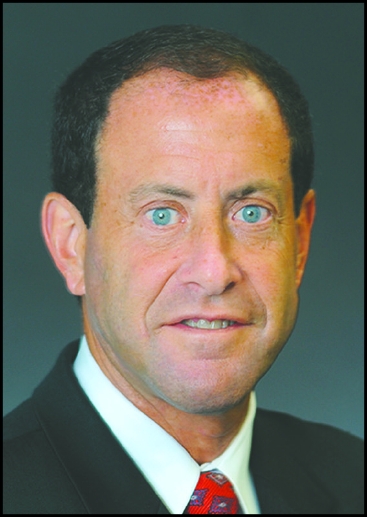Financial Management
Preparing for the Election: Let’s Compare Tax Proposals of Candidates Harris and Trump
By PHILLIP ROSS, CPA, CGMA, PARTNER

The 2024 presidential election presents a pivotal moment for the construction industry. Both Vice President Kamala Harris and former President Donald Trump propose contrasting tax policies that could reshape the financial landscape for construction firms and contractors.
With the sector highly sensitive to changes in corporate taxes, material costs and labor provisions, it’s essential to understand how each candidate’s policies could potentially impact profitability, project budgets and workforce dynamics. By anticipating these potential shifts, construction companies can make informed decisions as they plan for the future.
The upcoming election is shaping up to be a referendum on two distinct approaches to tax policy. Harris and Trump both have plans designed to address the nation’s economic challenges—but their proposals differ significantly on how they would impact businesses. For construction firms already facing tight margins, volatile material costs and labor shortages, these tax plans are particularly relevant.
Vice President Harris’s tax agenda centers on raising corporate tax rates, offering targeted incentives and increasing taxes on high-income earners—with particular attention to affordable housing and workforce support. Her proposal to raise the Federal corporate tax rate for C corporations from 21% to 28% is one of the more striking elements of her platform.
For construction firms, this increase could directly affect profitability and cash flow, particularly for larger companies or those already operating with narrow margins. In addition, Harris’s plan to impose a 25% minimum tax on unrealized capital gains for high-net-worth individuals could impact large contractors with owners holding significant wealth tied up in assets.
On the positive side for construction firms, Harris is proposing significant tax incentives aimed at promoting affordable housing. Her platform includes an expansion of the affordable housing tax credit, which could benefit construction firms involved in multi-family projects. Additionally, Harris’s plan to provide tax incentives for homebuilders constructing homes for first-time buyers could open up new residential development opportunities. These provisions align with the construction industry’s role in addressing the nation’s housing shortage and could encourage investment in housing projects.
From a human capital perspective, Harris’ proposals also include policies that could indirectly impact construction labor costs. For example, her plan to expand the child tax credit—raising it to $6,000 for the first year—could alleviate some financial pressure on low-income workers, including those employed in construction. Conversely, her proposal to increase the top individual income tax rate to 39.6% could affect high-earning business owners and contractors, potentially reducing after tax net profits for executives in the industry.
Construction firms involved in international projects could face additional challenges under Harris’s tax plan. She has called for revising global intangible low-taxed income (GILTI) rules, which could raise tax rates on international earnings, and her proposed changes to international tax rules may limit opportunities for firms with overseas subsidiaries.
Former President Donald Trump’s tax proposals offer a contrast, focusing on reducing taxes across the board, making the expiring Tax Cuts and Jobs Act provisions permanent, and introducing tariffs that could significantly affect material costs for construction projects. Trump’s pledge to reduce the federal corporate tax rate for C corporations from 21% to 20% (or even as low as 15%) would offer an immediate boost to construction firms’ cash flow. His plan to make the expiring TCJA provisions permanent (such as the 20% pass-through deduction for S corporations and partnerships) would also benefit small- to medium-sized construction firms, allowing them to maintain favorable tax positions for the foreseeable future.
However, Trump’s tariff proposals could present a significant downside for the construction sector. His plan to introduce a baseline 10% tariff on all foreign-made goods, and a 60% tariff on Chinese imports specifically, could sharply raise material costs for construction firms that rely on imported supplies and other building materials. Higher material costs could force firms to increase contract bids, affecting their competitiveness and squeezing profit margins on projects.
On the labor front, Trump’s proposal to eliminate income taxes on Social Security benefits could provide relief to contractors and construction firm employees nearing retirement. While this policy may indirectly reduce payroll costs, the broader impacts on overall workforce compensation structures would need to be closely evaluated. Like Harris, Trump has also proposed measures to promote homeownership, offering tax incentives to first-time buyers. His plan has fewer restrictions on eligibility, and the incentives could generate demand for residential construction—creating new business opportunities for firms engaged in homebuilding.
As construction firms and contractors prepare for the outcome of the 2024 election, they must weigh the benefits and challenges of each candidate’s tax proposals. Harris’ focus on housing and social equity could create opportunities in certain sectors, but the overall increase in corporate and individual taxes might impact cash flow. Meanwhile, Trump’s tax cuts could bolster cash flow, but his trade policies might drive up material costs. Ultimately, construction businesses need to remain agile, planning ahead to navigate whichever tax landscape emerges post-election.
About the author: Phillip Ross, CPA, CGMA is an Accounting and Audit Partner and Chair of the Construction Industry Group at Anchin, Block & Anchin, LLP. For more construction industry thought leadership and content, log on to www.anchin.com.
